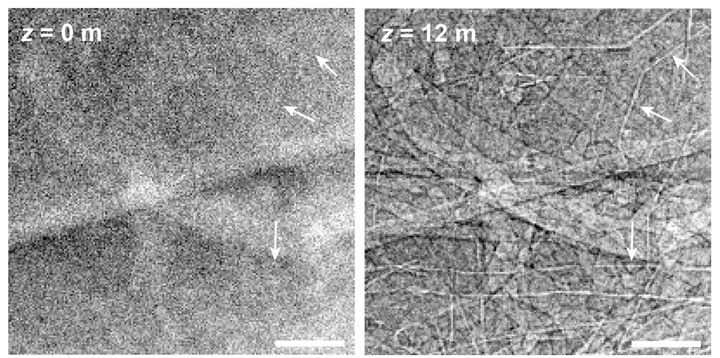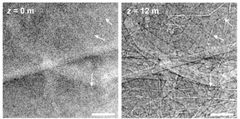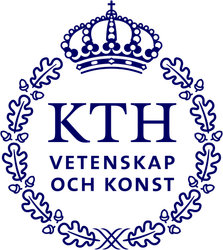Early-stage lung disease could be detected with advanced imaging tech

An imaging process that today is used mainly in research labs could potentially detect early-stage lung disease if developed for use in hospitals and clinics, a new research study shows.
Researchers from KTH Royal Institute of Technology in Stockholm tested how a process called phase-contrast X-ray imaging could be used on human lungs, using a model developed at Duke University for simulating the human chest.
They reported that phase-contrast chest radiography can visualize the smallest airways—measuring less than 2mm—and their disease-related obstructions. The study’s lead authors, Ilian Häggmark and Kian Shaker, researchers at KTH Royal Institute of Technology, say that these are details that don’t show up in conventional radiography.
The researchers reported their findings in the Proceedings of the National Academy of Sciences (PNAS) of the United States of America.
Phase contrast imaging is used in research labs with equipment that today is limited in use to imaging centimeter-scale samples of soft tissue. But, Häggmark says, the study clearly shows that it’s possible to do more with phase-contrast X-ray imaging, if the technical demands for clinical use can be engineered.
The chest radiography that clinics and hospitals use today plays an important role in detecting respiratory disease, but it is fundamentally limited by the way in which it generates images, Häggmark says.
He says that the promising phase-contrast technique used in the study could show subtle pathological changes that are otherwise invisible with conventional X-ray imaging, which is important when screening for diseases like asthma or chronic obstructive pulmonary disease (COPD).
“Phase-contrast X-ray imaging can extract more information at higher resolution using the same amount of radiation dose as in conventional radiography,” Häggmark says.
In conventional radiography, the X-ray beam passes through the body, where it is absorbed along the way in different tissues by different amounts. On the other side, a detector measures the intensity of the beam—or what’s left of it—after it has been filtered through the body. This process is known as attenuation, and it’s the basic mechanism for providing the contrast that makes X-ray images useful.
The phase-contrast technique is a way of getting more information out of each X-ray beam. That’s because it’s possible to measure differences in the waveforms of X-rays that pass through a sample. X-ray beams encounter atoms and other structures that can change the position of the wave at any point in time—the phase—in relation to a reference wave. This phase information is used to generate an image that enhances structures in the sample, which in the human chest highlights the boundaries of bronchial walls and small airways with higher contrast and better resolution.
Häggmark says that one key to the method is to move the detector further away from the patient.
Development of equipment for imaging larger samples will take time, he says. “You need an X-ray source with both high power and a small emission spot,” he says. “Basically you need bright X-ray sources.”
He says that promising developments are being carried out, but it will take time for this to reach testing for human use,” he says.
“For now, simulations and virtual clinical trials are the perfect tools to explore what we can do when the source technology is ready.”
Keywords
Images
About KTH Royal Institute of Technology
Founded in 1827, KTH Royal Institute of Technology in Stockholm is one of the world's leading technical and engineering universities, as well as a key center of intellectual talent and innovation.
Subscribe to releases from KTH Royal Institute of Technology
Subscribe to all the latest releases from KTH Royal Institute of Technology by registering your e-mail address below. You can unsubscribe at any time.
Latest releases from KTH Royal Institute of Technology
Study explains why new kinds of steel needed to build lead cooled reactors11.12.2025 14:23:59 CET | Press Release
Safer operation, better fuel efficiency and lower waste mark lead-cooled nuclear power as a potentially dramatic shift from the water-cooled nuclear stations the world has relied on since the mid 20th century. A recent Swedish study casts new light on how to avoid corrosion in the steel used to build these next-generation nuclear facilities.
Alternative to BPA passes toxicity and sustainability standards set by EU innovation guidelines4.12.2025 11:07:37 CET | Press Release
Polyester and a host of other plastic products could potentially be manufactured with non-toxic and sustainable BPA alternatives identified in a multidisciplinary study published today by researchers in Sweden.
Study shows potential for more affordable and efficient hydrogen gas production3.12.2025 15:29:35 CET | Press Release
A recent advance in the science of hydrogen fuel production could enable higher output and more sustainable production of this renewable energy source, researchers with Stockholm’s KTH Royal Institute of Technology report.
Calcium-sensitive switch designed to boost efficacy of cancer drugs24.11.2025 21:11:53 CET | Press Release
Cancer-fighting antibody drugs are designed to penetrate tumor cells and release a lethal payload deep within, but too often they don’t make it that far. A new study shows how this Trojan Horse strategy works better by exploiting calcium differences outside and inside cells.
Potential treatment may prevent brain damage in premature babies11.11.2025 11:10:46 CET | Press Release
A treatment that could protect premature babies from brain damage showed promise in a recent study in Sweden. Using a first-of-its-kind prenatal brain model created with human cells, researchers observed new details about the effects of cerebral hemorrhages on stem cells during premature birth. And they successfully tested an antidote that reduced the damage.
In our pressroom you can read all our latest releases, find our press contacts, images, documents and other relevant information about us.
Visit our pressroom
